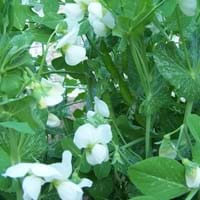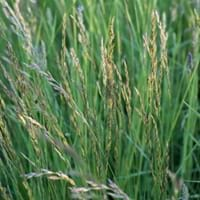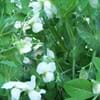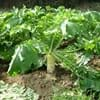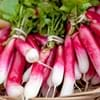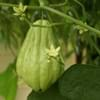Origin
Mediterranean
Eastern Europe, Northern Europe, Russia/Siberia, Western Asia
Types
cowpea , pigeon pea
Not Available
Number of Varieties
Not Available
Habitat
Fields, Loamy soils
Grassland
USDA Hardiness Zone
Not Available
3-7
Sunset Zone
A1, A2, A3, H1, H2, 1a, 1b, 2a, 2b, 3a, 3b, 4, 5, 6, 7, 8, 9, 10, 11, 12, 13, 14, 15, 16, 17, 18, 19, 20, 21, 22, 23, 24
A2, A3, 1a, 1b, 2a, 2b, 3a, 3b, 4, 5, 6, 15, 16, 17
Habit
Vining/Climbing
Clump-Forming
Minimum Width
Not Available
Flower Color
White, Pink, Lavender
Not Available
Flower Color Modifier
Bicolor
Bicolor
Fruit Color
Green
Not Available
Leaf Color in Spring
Green, Sea Green, Gray Green
Dark Green
Leaf Color in Summer
Not Available
Light Green
Leaf Color in Fall
Green, Blue Green, Gray Green
Dark Green
Leaf Color in Winter
Green, Blue Green, Gray Green
Dark Green
Leaf Shape
Egg-shaped
Grass like
Plant Season
Spring, Fall, Winter
Spring, Summer, Fall, Winter
Sunlight
Full Sun, Partial Sun
Full Sun, Partial Sun
Type of Soil
Clay, Loam, Sand
Clay, Loam
The pH of Soil
Neutral
Acidic, Neutral, Alkaline
Soil Drainage
Well drained
Average
Bloom Time
Early Spring, Spring, Late Spring, Fall, Late Fall, Early Winter, Winter, Late Winter
Summer
Tolerances
Variety of soil types
Not Available
Where to Plant?
Ground
Ground
How to Plant?
Seedlings
Seedlings
Plant Maintenance
Medium
Medium
Watering Requirements
Do not let dry out between waterings, Needs watering once a week
Medium
In Summer
Consistently
Lots of watering
In Spring
Adequately
Moderate
In Winter
Less Watering
Average Water
Soil pH
Slightly Acidic
Acidic, Neutral, Alkaline
Soil Type
Clay, Loam, Sand
Clay, Loam
Soil Drainage Capacity
Well drained
Average
Sun Exposure
Full Sun, Partial Sun
Full Sun, Partial Sun
Pruning
No pruning needed, Remove damaged leaves, Remove dead branches, Remove dead leaves
Remove damaged leaves, Remove dead branches, Remove dead leaves
Fertilizers
All-Purpose Liquid Fertilizer, Compost
All-Purpose Liquid Fertilizer
Pests and Diseases
Aphids, Leaf curl, Powdery mildew, Red blotch, Root rot
Red blotch
Plant Tolerance
Light Frost
Drought
Flowers
Showy
Insignificant
Flower Petal Number
Single
Single
Fragrant Bark/Stem
No
Yes
Foliage Texture
Medium
Fine
Foliage Sheen
Matte
Glossy
Attracts
Not Available
Cattle and horses
Allergy
Diarrhea, Intestinal gas
Heartburn, Nausea, Stomach pain
Aesthetic Uses
Not Used For Aesthetic Purpose
Showy Purposes, small hedge
Beauty Benefits
For treating wrinkles
Not Available
Edible Uses
Yes
Sometimes
Environmental Uses
Food for animals
Air purification
Medicinal Uses
No Medicinal Use
Cancer, Diarrhea, Haemorrhages, Malaria
Part of Plant Used
Leaves, Seeds
Leaves, Root
Other Uses
Cosmetics, Making Shampoo, Used as a nutritious food item, Used As Food
cultivated as pasture or hay crop, Used as a golf course turf, Used for pasture
Used As Indoor Plant
No
No
Used As Outdoor Plant
Yes
Yes
Garden Design
Container, Edible, Herb, Vegetable, Vine
Lawns and Turf
Botanical Name
PISUM sativum
LOLIUM perenne
Common Name
Garden Pea
Perennial Ryegrass
In Hindi
मटर
Lolium perenne
In German
Erbse
Lolium perenne
In French
Erbse
Lolium perenne
In Spanish
guisante
Lolium perenne
In Greek
μπιζέλι
Lolium perenne
In Portuguese
ervilha
Lolium perenne
In Polish
groch
Lolium perenne
In Latin
pea
Lolium perenne
Phylum
Magnoliophyta
Magnoliophyta
Class
Magnoliopsida
Liliopsida
Clade
Dicotyledonous
Angiosperms, Commelinids, Monocots
Tribe
Not Available
Not Available
Subfamily
Not Available
Not Available
Number of Species
Not Available
Importance of Garden Pea and Perennial Ryegrass
Want to have the most appropriate plant for your garden? You might want to know the importance of Garden Pea and Perennial Ryegrass. Basically, these two plants vary in many aspects. Compare Garden Pea and Perennial Ryegrass as they differ in many characteristics such as their life, care, benefits, facts, etc. Every gardener must at least have the slightest clue about the plants he wants to plant in his garden. Compare their benefits, which differ in many ways like facts and uses. The medicinal use of Garden Pea is No Medicinal Use whereas of Perennial Ryegrass is Cancer, Diarrhea, Haemorrhages and Malaria. Garden Pea has beauty benefits as follows: For treating wrinkles while Perennial Ryegrass has beauty benefits as follows: For treating wrinkles.
Compare Facts of Garden Pea vs Perennial Ryegrass
How to choose the best garden plant for your garden depending upon its facts? Here garden plant comparison will help you to solve this query. Compare the facts of Garden Pea vs Perennial Ryegrass and know which one to choose. As garden plants have benefits and other uses, allergy is also a major drawback of plants for some people. Allergic reactions of Garden Pea are Diarrhea and Intestinal gas whereas of Perennial Ryegrass have Heartburn, Nausea and Stomach pain respectively. Having a fruit bearing plant in your garden can be a plus point of your garden. Garden Pea has showy fruits and Perennial Ryegrass has no showy fruits. Also Garden Pea is not flowering and Perennial Ryegrass is not flowering . You can compare Garden Pea and Perennial Ryegrass facts and facts of other plants too.
